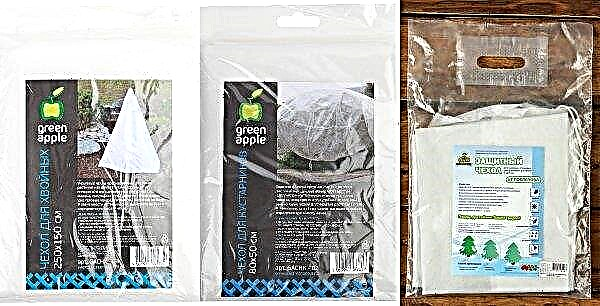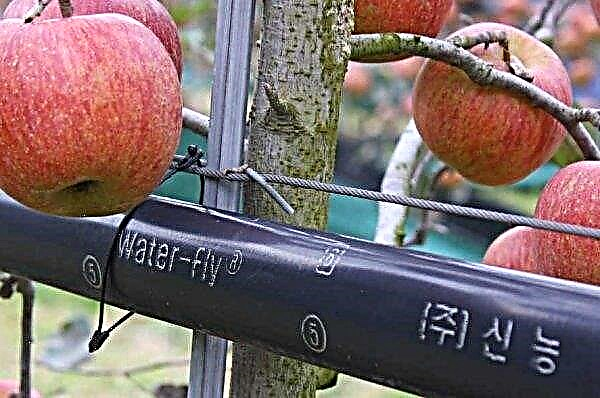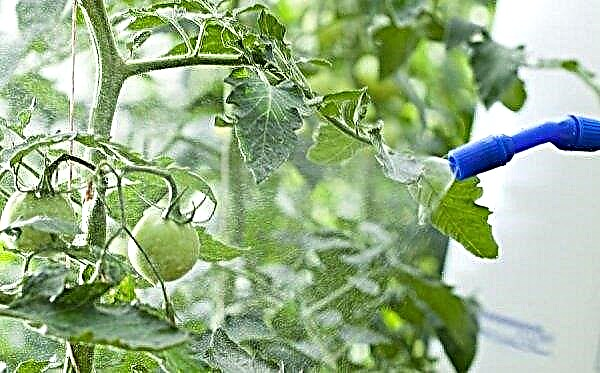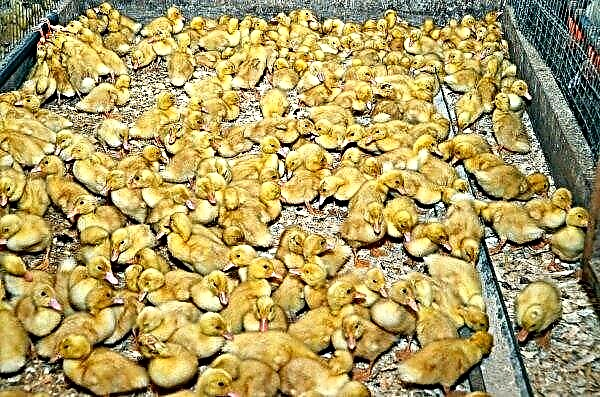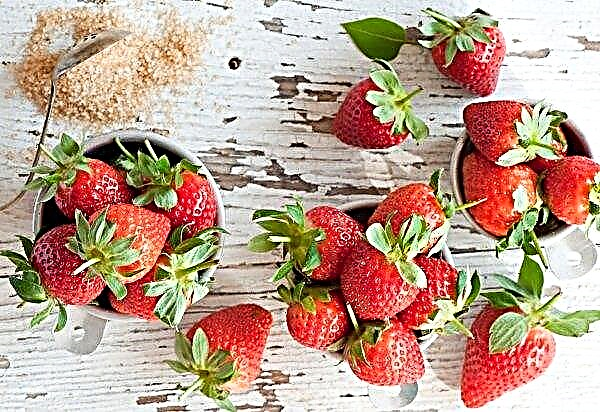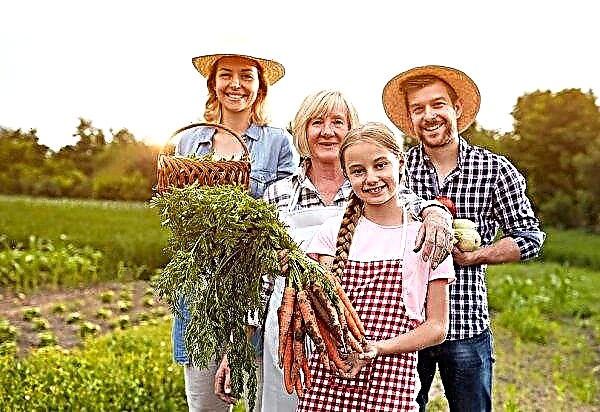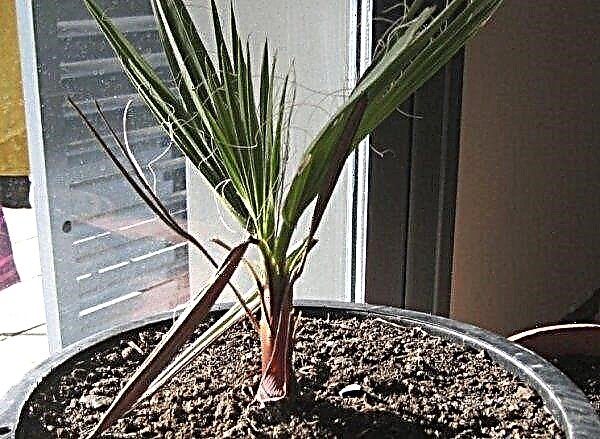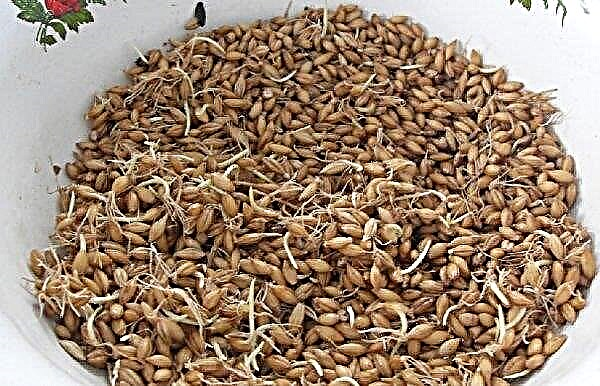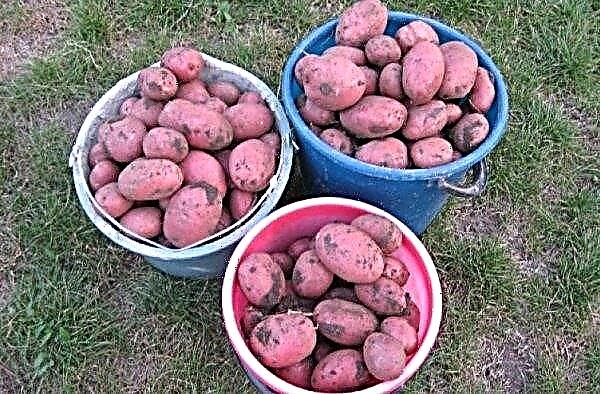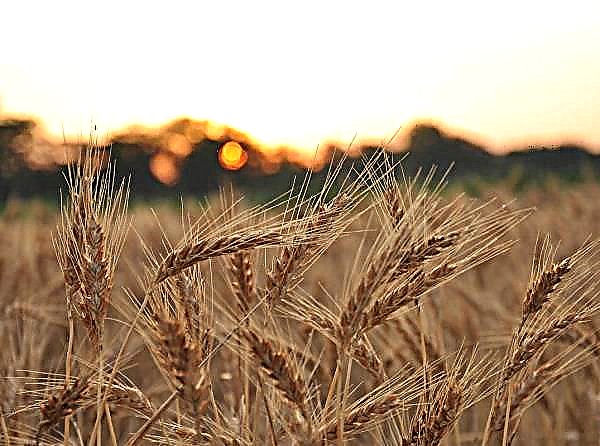There are varieties of tomatoes that have been known for more than a decade, but do not cease to enjoy well-deserved popularity. Such tomatoes include the Novichok variety. Despite the name, this variety is not considered new, but has been known to vegetable growers for more than 30 years and arouses their well-deserved attention.
Grade description
The Novichok variety, bred by Russian breeders L.N. Popova and N.I. Chulkov., Was registered in the State Register of the Russian Federation in 1986.
It has a number of characteristics:
- for official purposes, it should be grown in open areas, but it feels quite comfortable in greenhouses;
- a determinant plant that is not stunted;
- compact, but sometimes the stems reach a height of 85 cm;
- leaves of a usual green tint and standard in size;
- the first flowers are formed in the region of the sixth or seventh leaf, the subsequent ones - in a step from one to two leaves;
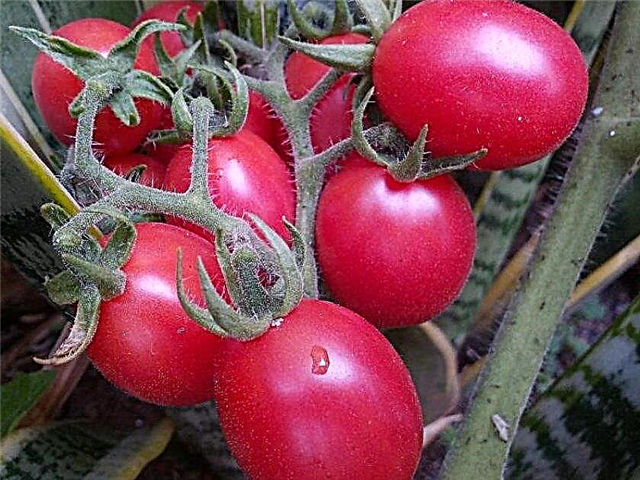
- 5 fruits usually appear in brushes;
- it is a mid-early variety;
- the fruits ripen fully in the period from the 114th to the 128th day after the formation of sprouts;
- oval-shaped fruits with a smooth, dense skin;
- each vegetable has from 3 to 5 segments;
- in the classic initial version Novichok tomatoes are red with an orange tint, but in 2006 a new pink Novichok was developed on its basis, later another variety of this variety appeared - Novichok de luxe, red, the shape of the fruit resembles a cube, and the ripening time is 7 days later than relatives;
- the fruits are relatively small in size, their mass is determined from 70 to 100 g;
- found their application in canning, pickling, salting, cooking salads, juices, sauces;
- the fruits are absolutely not susceptible to cracking both fresh and in billets;
- the yield is 2 kg per plant or up to 14 kg per 1 sq. km. m area;
- vegetables are characterized by density, the peduncle is quite simply separated from them, ripen together - these facts make the variety suitable for planting on an industrial scale, in large farms, where it becomes possible to pick tomatoes mechanically;
- ripened fruits of this variety at an untimely harvest for quite a long time retain their presentation, are not prone to overripening, but harvested and not fully ripened tomatoes are able to “reach” during further storage.
Advantages and disadvantages
- "Novice" has many positive features:
- almost instant harvesting;
- ripening stability of tomatoes;
- insignificant level of necessary pinching;
- plants are easy to care for;
- the possibility of long-term storage of tomatoes;
- Tomatoes behave perfectly during transportation;
- universal in future use;
- unpretentious when grown;
- resistant to disease;
- do not crack;
- for a long time do not overripe.
- The Novice has practically no shortcomings, but some of its features are sometimes perceived as undesirable:
- the organization of fruit ripening, some gardeners would like to replace with a longer stretch in harvesting;
- lack of cold resistance;
- the taste of the fruit is not rated highest.
Self-growing seedlings
The variety is not particularly difficult in terms of agricultural activities. In warm areas of the country, it can be planted using direct sowing of seeds in open ground. But in most cases, these tomatoes are obtained at the preliminary stage - growing seedlings.
Did you know? Eating tomatoes rich in serotonin (a hormone of happiness) and thiamine (an antineuric vitamin) has a calming effect on the body under stress.
Sowing dates
To allow seedlings to be transplanted into the open ground at the recommended time for this, Novichok seeds are sown around the twentieth of March. Seedlings at the time of determining it in open ground should be two months old.

The soil
For sowing seeds for several days in advance, the soil is specially prepared. To this end, sand, turf and peat land are mixed with the addition of decayed fertilizer, compost, wood ash. In the absence of the ability to prepare the soil mixture ourselves, a purchased ready-made mixture enriched with nutrients is quite suitable. It will be useful to disinfect the prepared soil by pouring it with boiling water and a weak solution of potassium permanganate a couple of days before sowing.
Important! Due to the ability to provoke a rapid increase in green mass and the appearance of pathogens, it is not recommended to mix fresh manure into the soil.
Capacity for growing
Suitable options for containers for seedlings are boxes made of wood or containers made of plastic. Often use separate plastic cups and other devices. Previously, they should be disinfected with a solution of potassium permanganate.
Seed preparation
An experienced and knowledgeable vegetable grower will always check the seeds and process them correctly before sowing. In order to check the seeds of tomatoes intended for sowing, they need to be lowered into a five percent salt solution for a couple of tens of minutes. Suitable and vital specimens will fall to the bottom, and unsuitable will remain on the surface of the solution.

Sinking to the bottom, specimens should be washed and dried. Then they need to be disinfected for at least half an hour in a solution of potassium permanganate in a saturated pink color, after which they should be washed again with clean water and dried. Next, it will be useful to harden the seed: it is placed in a moistened tissue, wrapped and determined in the refrigerator for a couple of days, or alternate with the refrigerator and a warm place (12 hours each).
Seeds must be completely dry or germinated before sowing. To carry out the germination of seeds, they should be wrapped with a wet cloth and left warm for a while until the white shoots appear, after which they are ready for sowing.Important! Soaking in solutions of salt and potassium permanganate helps to disinfect seeds, to destroy completely pathogenic spores on them, if any. In addition, this procedure helps to stimulate germination and seed recharge.
Sowing seeds
Dried, hardened or sprouted seeds are determined in the prepared soil, poured into a container with a layer of up to 6 cm. It is recommended that the sprouted seeds be carefully grabbed with tweezers to avoid damage to the roots. Seeds are immersed in moist soil to a depth of 1-1.5 cm. The distance between each specimen should be from 2 to 3 cm.

Seedling Care
A container with sown seeds is covered with a film or glass on top for the rapid emergence of sprouts. Before the emergence of shoots in the room, the temperature is maintained at + 21-24 ° C. The room should be adequately lit.
As soon as the seedlings appear, the cover must be removed and the room temperature reduced to +16 ° C. To ensure uniform development of plants, they should be regularly rotated. Temperature conditions above +18 ° C and insufficient lighting have a detrimental effect on the sprouts that appear, they begin to weaken. Great benefit will bring irrigation, combined with mineral fertilizing. But if the soil was originally nutritious, then it does not need additional fertilizing. The benefits of foliar feeding by spraying on bushes of wood ash.
Important! Dried soil is less dangerous for beginner seedlings than waterlogged, swampy.
Abundantly water the seedlings should be only 4 times: when sowing seeds, sprouting them, the first leaf, before picking. In any case, care must be taken to prevent stagnation of water.
As soon as a few leaves appear on seedlings, it is considered ready for a pick. It must be carried out necessarily. With it, it is recommended to pinch the main root to ensure the development of strong roots on the sides.

Seedling hardening
7-10 days before planting in open ground, seedlings begin to be watered less and for a short time taken to a balcony or veranda, gradually increasing the time it stays there. The next step is the constant presence of plants on the street. After such manipulations, the seedlings are considered prepared for transplantation into the garden.
Did you know? The weight of a wild tomato can be no more than 1 g, and the cultivated fruit can have a mass of more than 1 kg.
Planting seedlings in a permanent place
In areas where Novichok is recommended for productive cultivation, it is optimal to safely plant its seedlings in open soil at the end of May.
Planting seedlings depends on the climate of the area where it is produced, as well as the conditions in which the seedlings are determined - greenhouse or unprotected space. The main thing at the beginning of the landing is to eliminate the threat of frost. Novichok landed in greenhouses at the end of spring, it is better to determine it in the open soil in mid-June.

This is usually done when the seedlings turn two months from the day the seeds are sown. Chunky plants with a thick stalk no higher than 30 cm without formed flower brushes are great for transplanting.
Seedlings are planted at the rate of up to seven plants per 1 square. m square, staggered at a distance of 40 cm between the bushes. Between the rows you should maintain a slightly greater distance, up to half a meter.
Pre-dug holes for landing should be abundantly watered. If the seedlings have remained compact, then it should not be deepened much, but if it has grown more than it should, then it should be buried almost to the leaves. It is enough to water the planted seedlings and mulch the earth around it with dry earth, grass, decayed residues.
Features of outdoor care
Tomatoes Novice is absolutely unpretentious in leaving. Only at first during the first seven days after landing in open space should they be shaded from strong sunlight or protected from an unexpected drop in temperature.
Watering
A beginner loves heat, sun and moisture. But it must be borne in mind that he begins to feel bad both with a lack of moisture and with an excess of it, especially in cool periods. Water the tomatoes should be necessary. On hot days without precipitation, it is recommended to water once every few days in the evening.

Top dressing
Even with qualitatively fertilized soil on which Novichok tomatoes are planted, over time, you will have to feed it several more times:
- the first time - in June, a couple of weeks after transplanting seedlings, you can fertilize with infused mullein or herbs with urea;
- the second time - in July, nitroammophos;
- the third time - in August, spray the leaves with a solution of boric acid (1-2 g per bucket) or milk with iodine, adding any phosphorus-potassium fertilizer under the root.
Did you know? Tomatoes are relatives of potatoes and tobacco: they belong to the same family - nightshade.
Stitching and tying the bush
The beginner does not belong to the standard varieties, so the bushes should be tied. Garter support is best done immediately after planting, so as not to damage the root system of plants after. The distance from the stem of the plant to the stick should be at least 10 cm, the stem should not be firmly gripped by the garter.

Beginner tomatoes practically do not require pinching. They usually form one stalk, less often two. There are few stepsons for this variety of tomatoes, but when they appear, they still need to be removed.
Important! In the process of fruit ripening, it is also worth removing the yellowed leaves and those that are clearly superfluous, covering the tomatoes from the rays of the sun.
Soil care
When growing tomatoes Novichok can not do without weeding, cultivating, hilling, removing weeds near the plants and throughout the territory where they are grown. The earth in these places should be friable. It will be useful after each watering to loosen the soil between the rows. In the first period up to 20 days after planting seedlings, loosening should be to a depth of 10 to 12 cm, then, to avoid damage to the root system, up to 8 cm. In this case, weeds should also be weeded and removed.

Preventative treatment
The beginner is very resistant to pests and diseases, but still it is necessary to carry out preventive treatment of plants. For this purpose, “Fitosporin”, “Trichodermin”, boric acid, milk are used. As autumn approaches, the nights become cool and dewy, so the plants are treated with Bordeaux liquid and copper-containing products. In case of late blight, tomatoes should be picked. You can sometimes get rid of the Colorado potato beetle, aphids, spider mites and other pests with the help of manual assembly, specially designed insecticides and folk remedies also help in this matter (spraying plants with a solution of laundry soap, iodine, milk and other natural components).

Tomatoes Novice enjoy well-deserved popularity among gardeners. Their universal purpose, high yield, excellent behavior under different storage and transportation conditions and excellent presentation make this variety successful for growing.
Network user reviews
ADVANTAGES: Germination, plant height, resistance to temperature conditions, active flowering and ovary. DISADVANTAGES: Not yet discovered. Good day! I’m not a farmer, not a gardener or gardener) I’m just studying)
This year, I randomly took the first bag of tomato seeds that came across, I got a picture and description. The seed germination was 100%, I did not count on it and was a little shocked. Seedlings I had what is called "deadly", because the sun is up to 11, and the crowns of trees obscure daylight. I soaked the seeds in a wet rag in the old fashion and left until the morning. Landed in the second half of April. I know that it’s too late :), but earlier the weather didn’t spoil the sun, but to buy specials. I didn’t want the lamp. There was no hope of success, but once they brought it, it was decided to drop it off. The strongest specimens in the greenhouse, the rest in the open ground. In the greenhouse, the land is manmade and quite loose. Open ground - mainly sand. In each hole I added manure and forest surface humus soil. I water both beds with ordinary water, once a month with infused manure and vermicompost from the store. Since the planted bushes were stunted, they bloomed a week later than their counterparts (brothers of another variety were grown by their mother on the 6th floor of the southern windows). There are many peduncles. The fruits are tied without problems, they were not even sprayed with the ovary. Tomato "beginner" is medium-tall. They promise us no more than 90 cm. This is a plus, since other varieties (the cascade and the little inch grow next to it are already resting on the roof of the greenhouse, in the places of the slope). Tomato "newbie" on the day of writing the review: In the greenhouse about 80 cm, and in open ground, an eye of 60 cm. The leaves are powerful like those of an elite varietal potato, and the trunk reaches a thickness of 1.5 fingers (in a greenhouse). The lower side shoots grow with incredible strength and tenacity.Tortured to stepchild them, but it is necessary! Otherwise, the plant will spend all its strength on their growth and development, and not on fruit formation. As soon as the time comes for tomato harvesting, I will definitely add statistics on the number of fruits collected from one bush grown under different conditions. The impressions about taste, quality and storage of fruits. And then I’ll already adjust my grades if necessary. So, Madam statistics: The number of tomatoes from the bush in the greenhouse: 40, on the street 20-25. Ripening in a cool dark place is excellent, street blown a bit late blight. Storage: 2- 3 weeks, then the skin wrinkles a little, in a cool place - excellent. Taste: I like it. The skin is chewing :), the tomato is not fleshy, sweet, conveniently cut into rings. All fruitful autumn! Be it waiting for the harvest, the realization of plans, the implementation of ideas!


